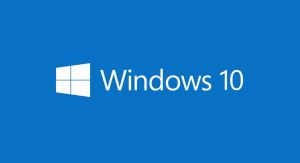With the launch of Windows 10 releasing globally to 190 countries on 29th July 2015, organisations with enterprise licences will delay the upgrade to the new Microsoft OS with its bells and whistles advances in applications, training and innovation. All other versions of Windows 7 and 8 will have the upgrade actively pushed to them. Windows 10 Enterprise will be available for bulk order from 1st August. Enterprise organisations will also be able to manage company-wide rollouts for the new update. However, the impact on non-enterprise licensed companies may be more bluntly felt as they will have less time to prepare for the changes.
Companies with Windows 7 and Windows 8/8.1 are able to take up the free upgrade for the first 12 months (after which it will cost from £100 to circa £150 unofficially for Windows 10 Pro) to run on PCs, smartphones and other devices. Home/device users may notice a new windows icon at the bottom of the screen readying the 1.5 billion computers and other devices for the upgrade. Microsoft attests it has addressed compatibility issues to ensure the new tools will fully integrate with existing management software such as Enterprise Mobility Suite.
Key features of Windows 10
• Offering Azure Active Directory joining with single sign on through Office 365 which should help users manage multiple log on credentials
• Android and iOS apps will run on the new OS.
• Personal assistant Cortana will run synchronously across devices as a socially intelligent tool, keeping track of things of interest to the user, making suggestions or giving reminders about appointments. Her intelligence comes from Bing, accessing Tellme’s natural language processing and MS’ enormous cloud processing power.
• Edge browser will take over from the retiring default Windows browser Internet Explorer after 10 years
• Continuum will deliver the ability to seamlessly move between desktop use and hybrid device undocking to tablet mode and touch.
• Windows Hello facial recognition will appear: an Intel RealSense biometric authentication system which does not use a password, but has enterprise grade security.
• Added to this are the Universal Apps creating a single platform for developers and multiple platform use for the consumer once purchased including automatic updates as delivery is through the Cloud.
• Microsoft Passport secure sign-in for websites and services, supporting Active Directory services including Exchange Online, Salesforce, Citrix and Box
• Plus the traditional Mail, Calendar, Photos and Maps and the well publicised return of the popular Start menu.
With regular, incremental updates vs periodic changes, Windows 10 will make the management of updates on different devices and systems less of a headache for IT departments and MSPs, who will be able to tailor when updates roll out and target off peak periods to avoid impact during critical periods of business.
For MSPs, now is the time to review your customers profiles and ready each organisation for a big change in 2015 and with Microsoft’s latest announcements at MWP, a new series of commercial opportunities looks set to follow.
